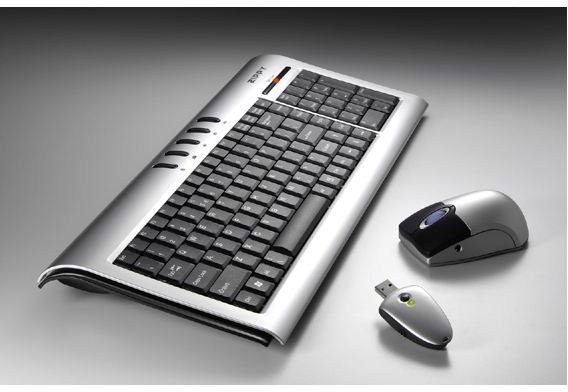Name Four Different Pieces of Computer Hardware - Input and Output Devices
Computers would be nothing but sophisticated boxes of no use if it weren’t for some way to input commands for the CPU to process and someway for the CPU to showcase results. The Motherboard has nothing to take information from and render information to if it weren’t for these devices, and we would literally have no way to use the computer, in the first place.
The computer comes with all sorts of input/output devices that have various roles to play – the most common ones being your keyboard and the screen. You also have the mouse, the outlets for speakers, flashing LEDs, network connections, and all sorts of other provisions that originate from the motherboard situated just where you can reach them, especially at the back of your computer.
The way these input/output devices and various other connections come with your computer, you don’t really have to worry about any of them until they stop functioning. That is when you might have to have this new hardware fixed and reach out to the connectors that connect the input/output device cables at the back of your computer.
Again, compatibility has been well thought out here, and the keyboard or mouse cables can only be connected to their respective connectors at the back panel of the computer. Likewise, all other devices connect to the motherboard in a similar manne, so you can expect to fix loose connections or new hardware connections without any compatibility problems.
The keyboard and mice are probably the most used devices on your computer – things you are directly associated with, each day. They are the primary tools for the computer to receive inputs from you in the form of commands, information and data. The way this works is that these devices take the mechanical input from your hand (moving the mouse or typing on the keyboard) and convert them into electronic pulses that are taken as input signals( digitally) by the CPU, which then processes it.
The latest motherboards have lots of possible connectors all waiting to be plugged up – starting from the customary keyboard/mouse ones to Ethernet network cables, sound controllers, printers, connections to a projector, serial data, digital and analog audio, general purpose USB 2.0 ports and possibly many more.
[Img Courtesy: https://www.zippy.com.tw ]
This post is part of the series: Beginner’s Guide to Hardware
Not knowing about computers can make US obsolete. It is critical for us to develop an understanding of how these computers work since we have to make decisions about buying, repairing, selling, and using them. This continuing series is all about that and much more.
- An Introduction to Hardware for Beginners: A Primer
- An Introduction to Hardware for Beginners: Bits, Bytes and Beyond
- An Introduction to Hardware for Beginners: The Motherboard
- An Introduction to Hardware for Beginners: The Central Processing Unit
- An Introduction to Hardware for Beginners: The Chipset
- An Introduction to Hardware for Beginners: Understanding BIOS and Memory
- An Introduction to Hardware for Beginners: What Goes In and What Goes Out?
